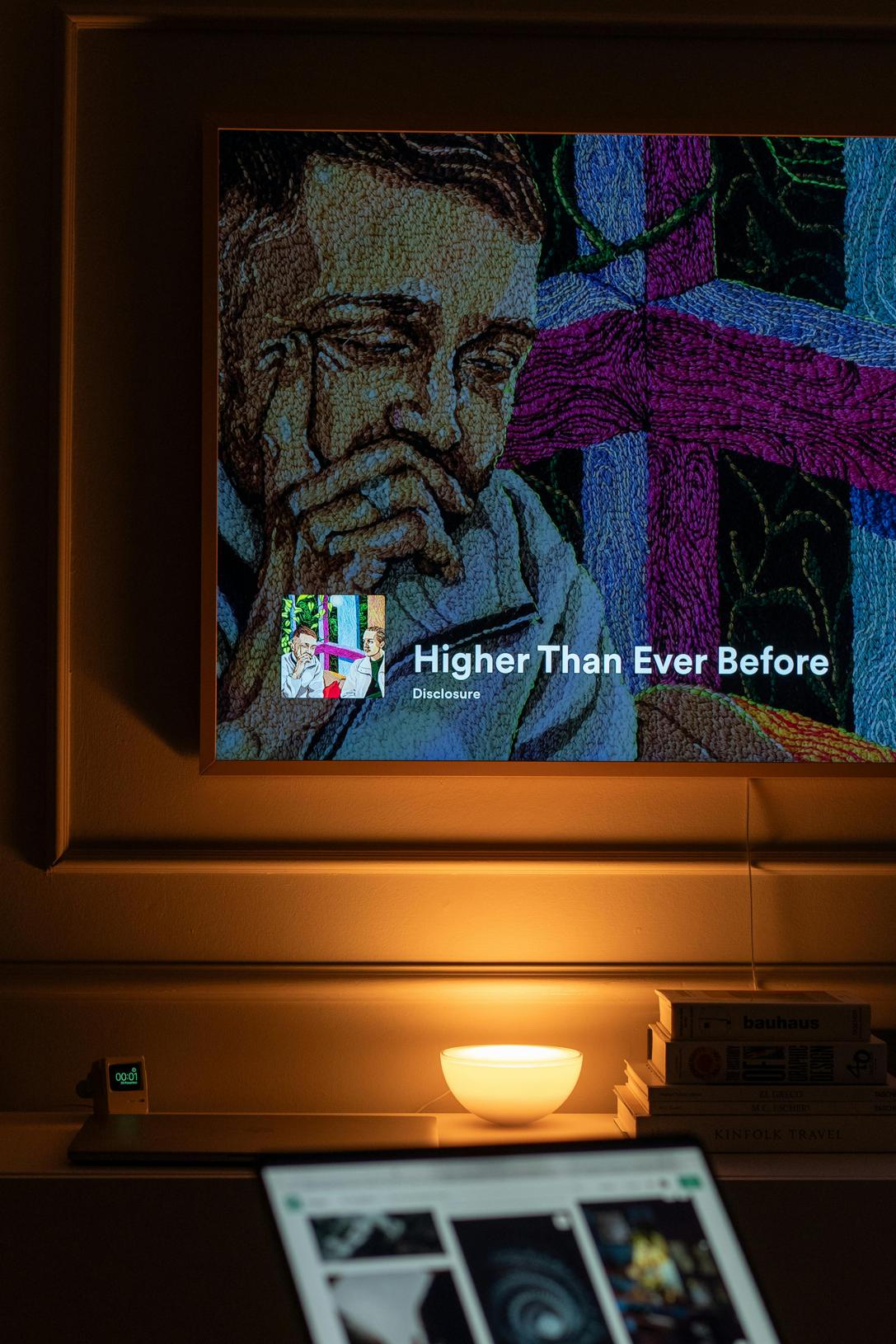How to Get Best Audio from TV: Tips for Superior Sound
Introduction
Great audio can elevate your TV-watching experience, making movies, shows, and music more enjoyable. If you've ever been frustrated by poor audio quality from your TV's built-in speakers, there are numerous ways to significantly improve the sound. From understanding various audio outputs to choosing the right speakers and fine-tuning settings, this guide will help you get the best audio from your TV setup.
To begin, it's crucial to understand the different types of audio outputs on your TV. Knowing your options helps you make informed decisions about the best external audio devices to use.

HDMI ARC and eARC
HDMI ARC (Audio Return Channel) and eARC (enhanced Audio Return Channel) allow audio to travel back from your TV to a soundbar or AV receiver, using a single HDMI cable. This setup provides high-quality audio without the need for multiple wires, simplifying your connections.
Optical Audio Outputs
Optical audio outputs use light to transmit sound signals, ensuring minimal interference and excellent sound quality. They're commonly found on TVs and work well with many soundbars and home theater systems.
RCA and 3.5mm Outputs
RCA and 3.5mm outputs are more traditional, allowing you to connect various audio devices. While they don't deliver the highest quality audio, they are versatile and widely supported by many older systems.
Bluetooth and Wi-Fi Connectivity
Many modern TVs come with Bluetooth and Wi-Fi capabilities, enabling wireless connections to external speakers and sound systems. This feature provides flexibility and reduces cable clutter, though sometimes at the expense of sound quality.
With a good understanding of your TV’s audio outputs, it's time to select the best speakers for optimal sound.
Having examined various audio outputs, the next step is to choose the right speakers for your setup. Different kinds of speakers offer unique advantages; the following types are excellent options to elevate your TV-watching experience.
Soundbars: Features and Benefits
Soundbars are a popular choice for enhancing TV audio. Compact and easy to install, they can deliver impressive sound quality. Modern soundbars often include built-in subwoofers and support for surround sound.
2.1 and 5.1 Surround Sound Systems
For a more immersive audio experience, consider a 2.1 or 5.1 surround sound system. A 2.1 system includes two speakers and a subwoofer, while a 5.1 system adds surround speakers, offering a richer, directional sound that can fill a room.
Smart Speakers and Voice Assistants
Smart speakers such as those from Google Home or Amazon Echo can integrate with your TV, allowing for hands-free control and multi-room audio. Many smart speakers offer surprisingly robust sound quality.
Portable Bluetooth Speakers
Portable Bluetooth speakers provide a flexible and often cost-effective way to enhance your TV’s audio. Easy to move around and connect, they're a good option for smaller spaces and temporary setups.
Once you’ve selected your speakers, it’s time to set them up for optimal audio performance.
Speaker placement and initial setup play crucial roles in achieving the best sound quality. Even the best speakers can underperform if not set up correctly.
Placement and Positioning Tips
- Main Listening Area: Position your speakers so that they're aimed at your main listening area.
- Height and Angles: Place your speakers at ear level or adjust their angle to improve direct sound delivery.
- Avoid Corners: Placing speakers too close to walls or corners can produce unwanted echoes and distortions.
Calibration and Adjustment
Calibrate your speakers using the built-in features of your TV or sound system. Many modern systems offer automatic calibration modes to adjust sound levels for the room’s acoustics, ensuring balanced sound.
Using Room Correction Software
Utilize room correction software to further fine-tune your audio setup. Applications such as Audyssey and Dirac Live adjust your sound system to compensate for the specific acoustics of your room.
Setting up your speakers correctly provides a strong foundation. Next, we’ll look into fine-tuning your TV’s sound settings for optimal results.
Fine-tuning your TV's sound settings can make a significant difference in audio quality. Let’s explore essential settings that can enhance your viewing experience.
Equalizer Settings
Adjusting the equalizer settings on your TV can balance various sound frequencies. Boosting the bass or treble according to your preferences can provide a more customized and enjoyable audio experience.
Sound Modes and Their Uses
TVs often come with different sound modes like 'Movie,' 'Music,' 'Sports,' and 'Game.' Each mode is optimized for specific content types. Explore these sound modes to determine which one offers the best audio for your favorite shows and activities.
Integrating with Streaming Devices and Consoles
Connecting your TV to streaming devices or gaming consoles might have additional audio settings. Checking and adjusting these settings can ensure consistent audio quality across all devices.
With your audio settings finely tuned, you might still run into some common issues. Let’s troubleshoot a few prevalent audio problems.
Even with the best setup, you might occasionally face audio problems. Here’s how to address some common issues:
Lag and Sync Problems
Audio lag or sync issues can be disruptive. Adjust the audio delay settings on your TV or sound system to synchronize the sound with the visuals effectively.
Connection Errors and Solutions
If you experience connection errors, check your cables and wireless connections. Sometimes, a simple reconnection or restart can solve issues. Ensure that all firmware is up to date.

Enhancing Dialogue Clarity
Dialogue can sometimes get buried in background noise. Increase clarity by adjusting the center speaker levels or using features like 'Dialog Enhancement' if available on your sound system.
Troubleshooting ensures consistently superb audio. For even better sound, consider these advanced tips and tricks.
Ready to take your audio to the next level? Here are some advanced tips and tricks:
Integrating Subwoofers for Enhanced Bass
Adding a subwoofer can dramatically improve low-frequency sounds, making explosions in movies or bass lines in music more vibrant and realistic.
Synchronizing with Smart Devices
If you have smart devices, integrate your audio system with them for a seamless experience. Many TV brands offer apps that can control audio settings directly from your smartphone.

Minimizing Audio Lag
To minimize audio lag, use wired connections whenever possible. Wireless connections like Bluetooth can introduce delays, so an HDMI or optical cable is often the best solution.
Having covered advanced tips, let's wrap up with a short conclusion and FAQs section.
Achieving the best audio from your TV involves understanding your options, choosing the right equipment, and fine-tuning your settings. With the insights provided, you can enjoy a rich, immersive viewing experience that makes the most of your audio setup.
Frequently Asked Questions
What is the best way to connect external speakers to my TV?
The best way to connect external speakers to your TV largely depends on your equipment. HDMI ARC or eARC is often ideal for the best sound quality and simplicity.
How can I reduce audio lag when watching TV?
To reduce audio lag, use wired connections like HDMI or optical cables instead of wireless solutions. Adjust audio delay settings on your TV if necessary.
What type of speakers should I use for the best TV audio experience?
To achieve the best audio experience, consider high-quality soundbars, 2.1 or 5.1 surround sound systems, and subwoofers for enhanced bass.



